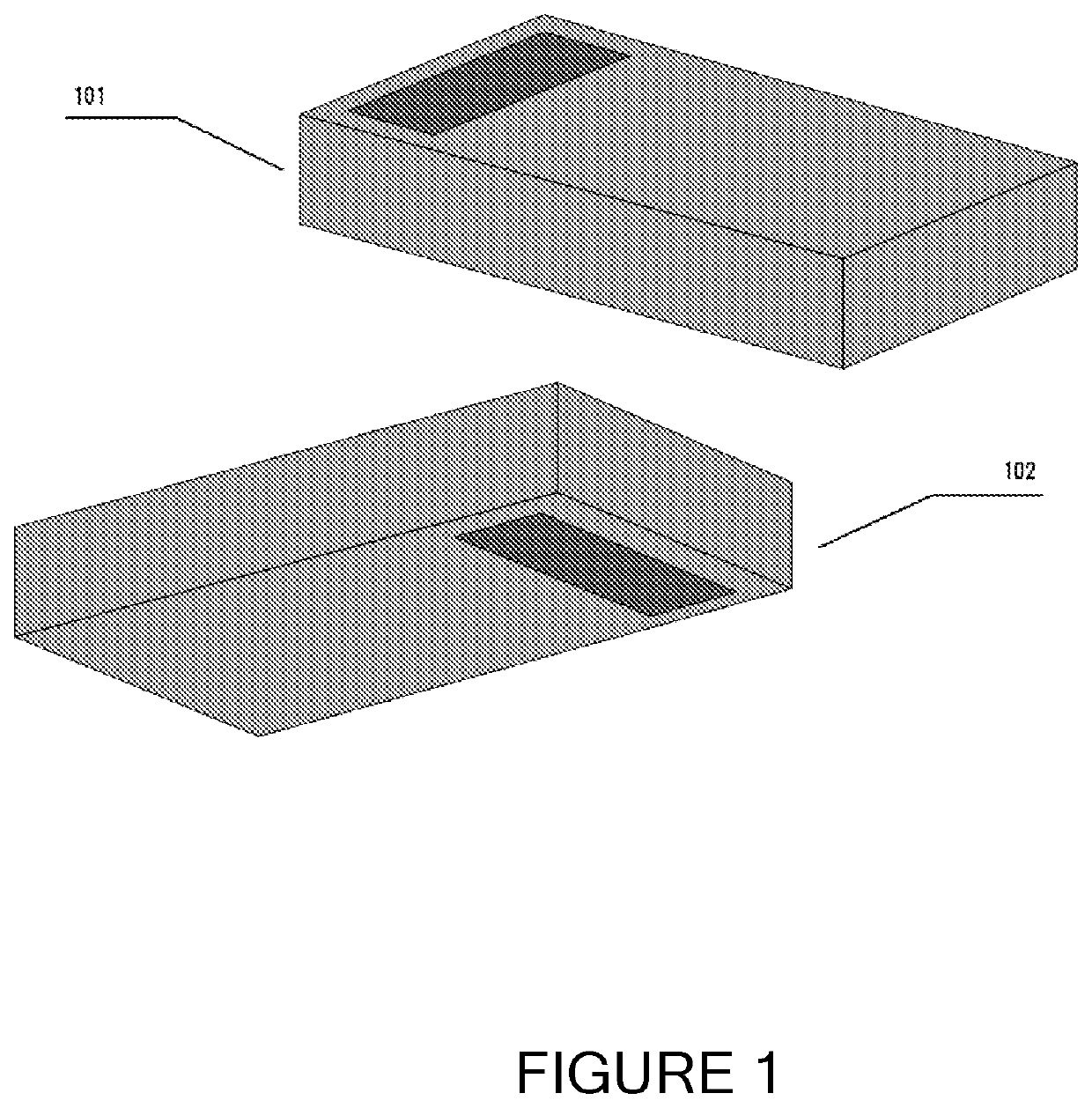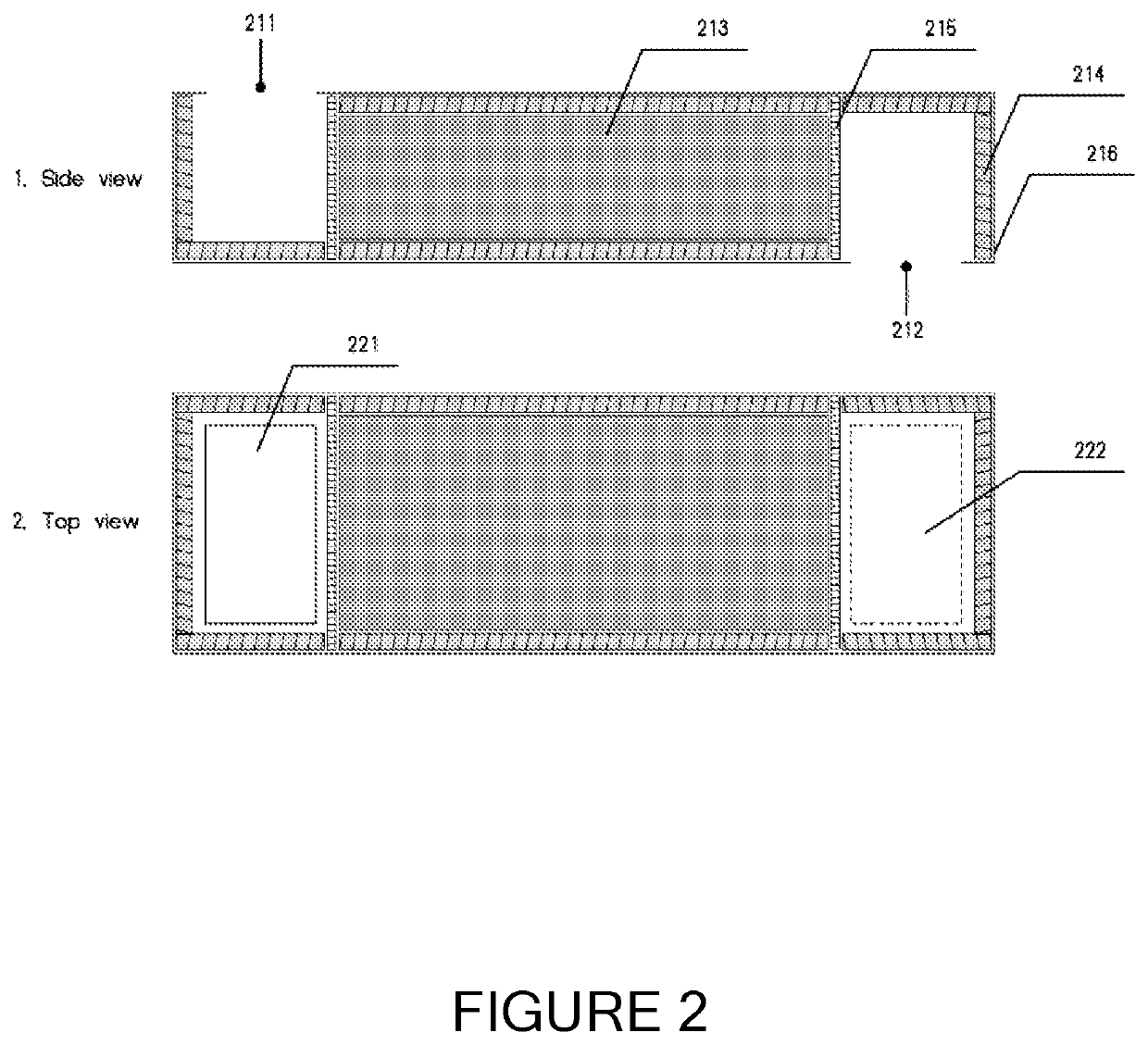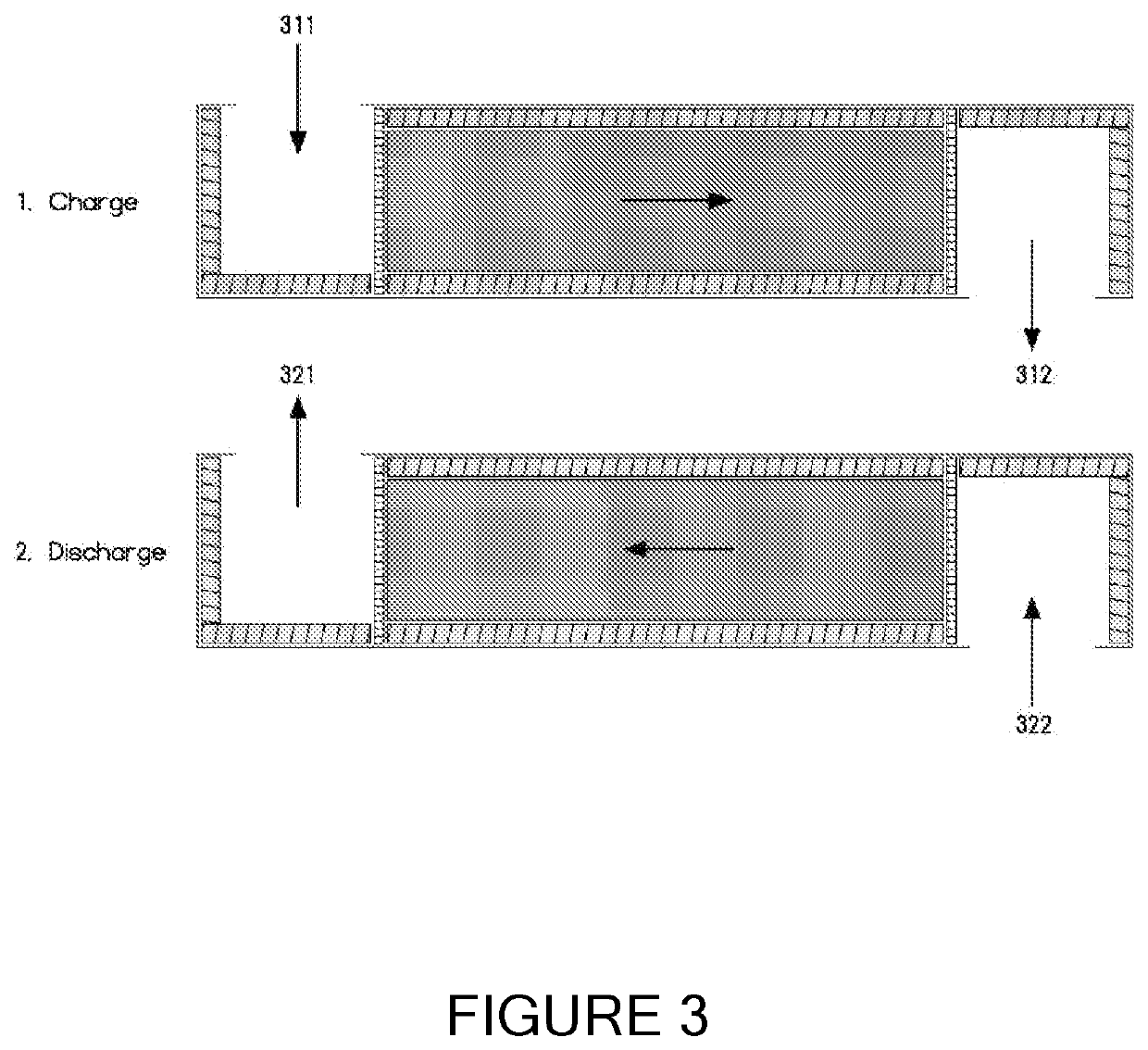Low-cost, modular high-temperature thermal energy storage system
a modular technology, applied in the field of modular high-temperature thermal energy storage systems, can solve the problems of limiting the applicability of heavy industry, increasing scarceness, and large size of heavy industry, and achieves the reduction of the relative thickness of the thermocline zone, increasing the charge and discharge efficiency, and reducing the fluid velocity in each module line
- Summary
- Abstract
- Description
- Claims
- Application Information
AI Technical Summary
Benefits of technology
Problems solved by technology
Method used
Image
Examples
Embodiment Construction
"d_n">[0045]The aspects of the method or system to provide a modular and high-temperature thermal energy storage system which withstands temperature and mechanical conditions according to the present invention, will be described in conjunction with FIGS. 1-8. In the Detailed Description, reference is made to the accompanying figures, which form a part hereof, and in which is shown by way of illustration specific embodiments in which the invention may be practiced. It is to be understood that other embodiments may be utilized and logical changes may be made without departing from the scope of the present invention. The following detailed description, therefore, is not to be taken in a limiting sense, and the scope of the present invention is defined by the appended claims.
[0046]The present invention relates to a low-cost, modular and high-temperature thermal energy storage system, with a minimum temperature level of 200° C. FIG. 1 illustrates the 3-D isometric view of the thermal ene...
PUM
 Login to View More
Login to View More Abstract
Description
Claims
Application Information
 Login to View More
Login to View More - R&D
- Intellectual Property
- Life Sciences
- Materials
- Tech Scout
- Unparalleled Data Quality
- Higher Quality Content
- 60% Fewer Hallucinations
Browse by: Latest US Patents, China's latest patents, Technical Efficacy Thesaurus, Application Domain, Technology Topic, Popular Technical Reports.
© 2025 PatSnap. All rights reserved.Legal|Privacy policy|Modern Slavery Act Transparency Statement|Sitemap|About US| Contact US: help@patsnap.com



